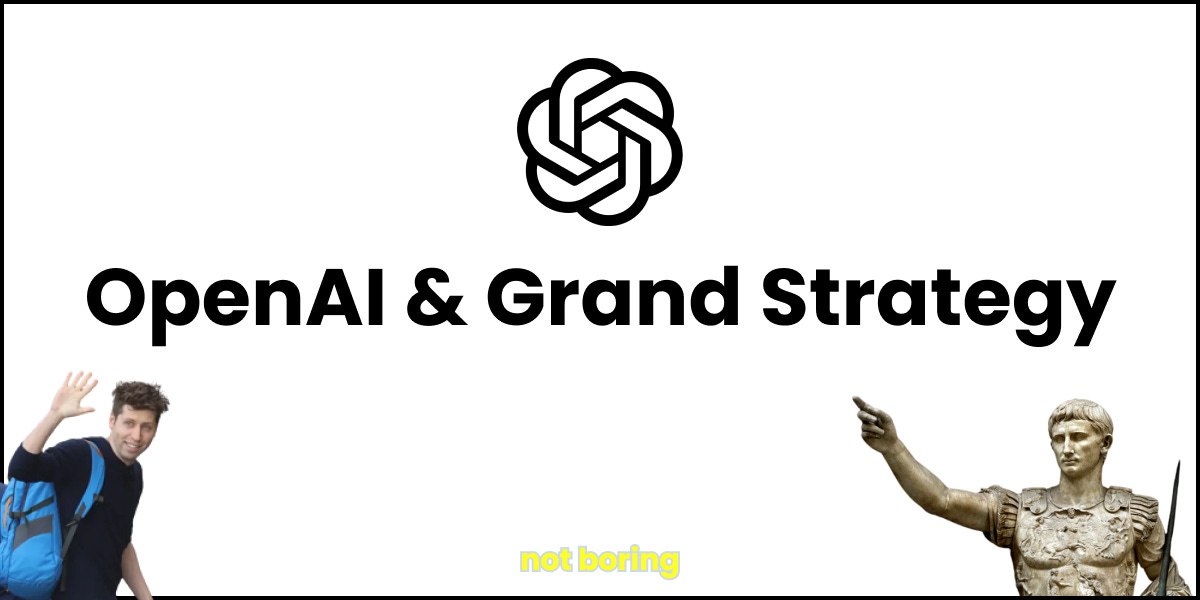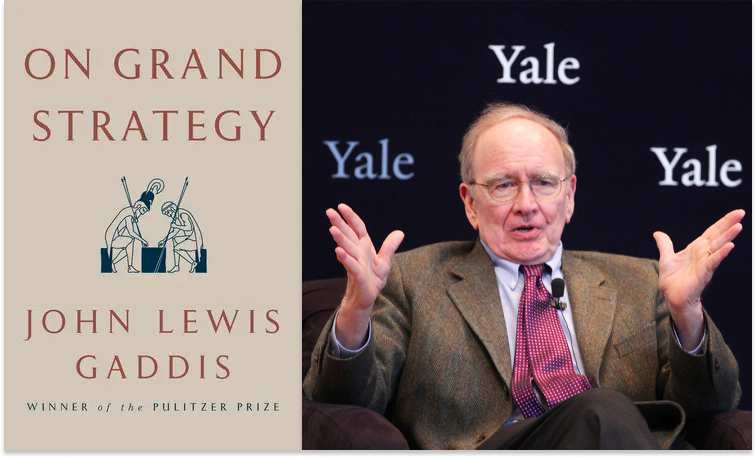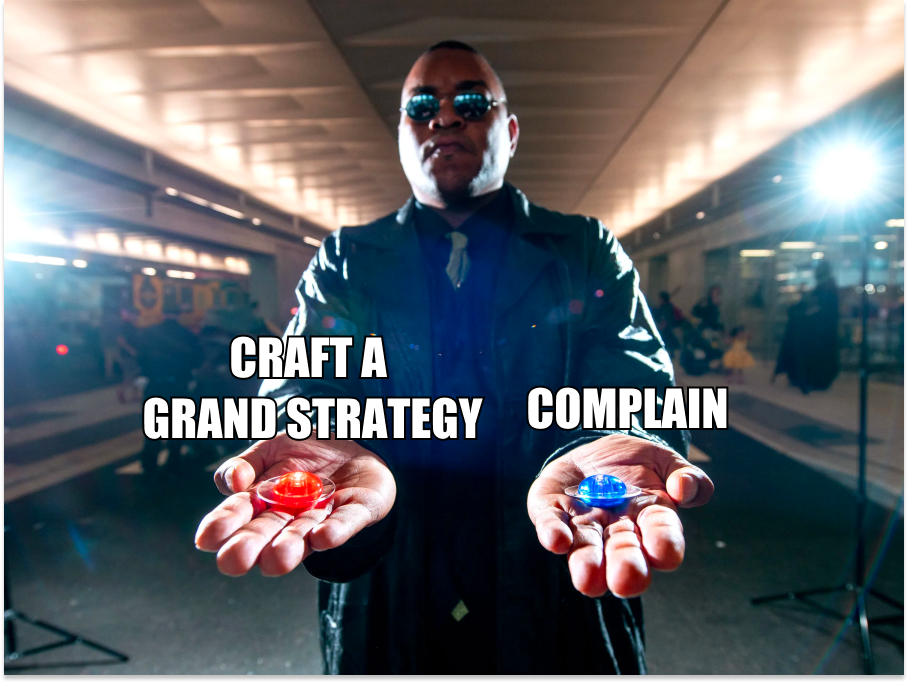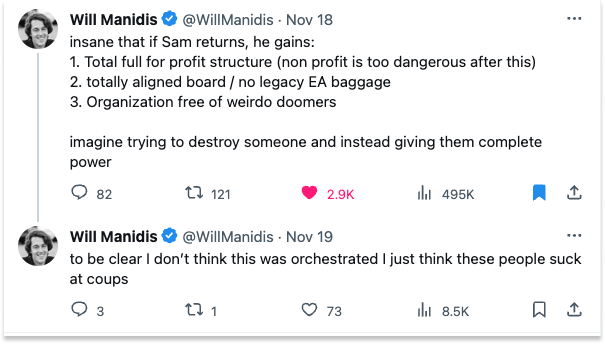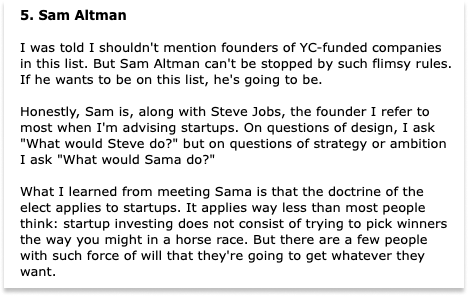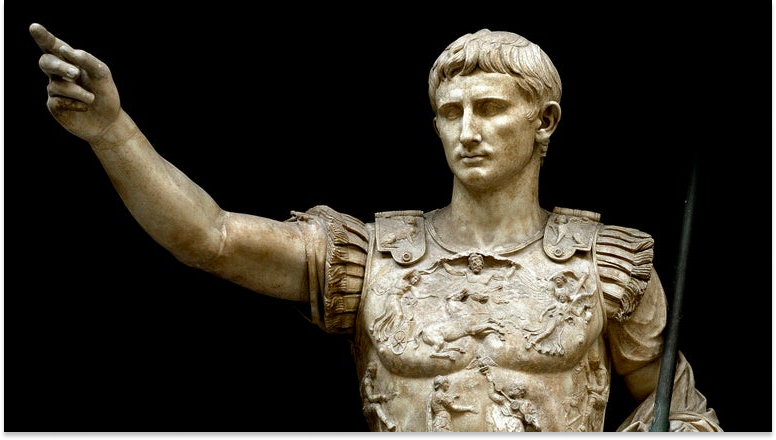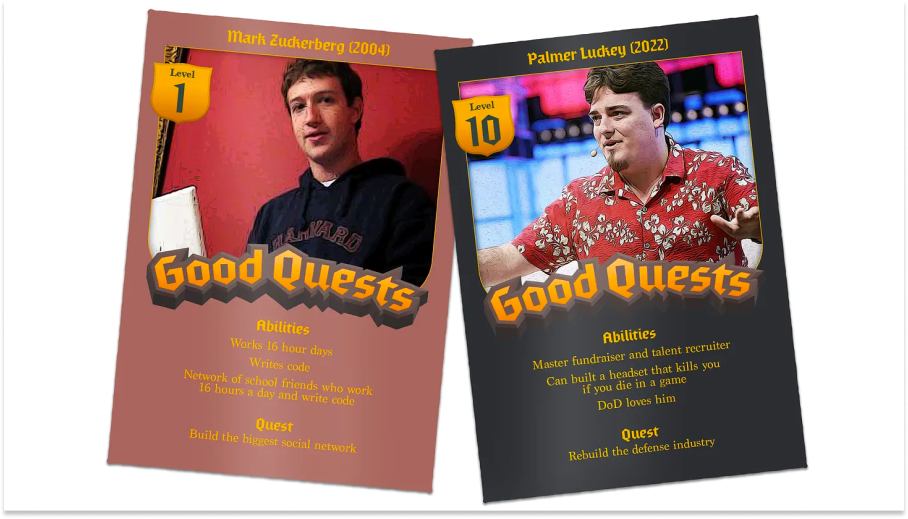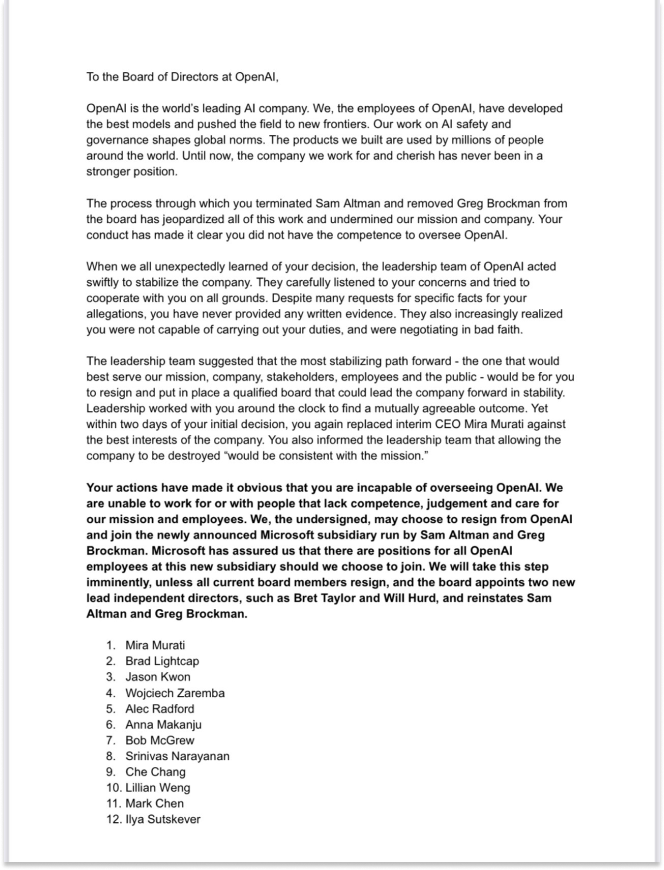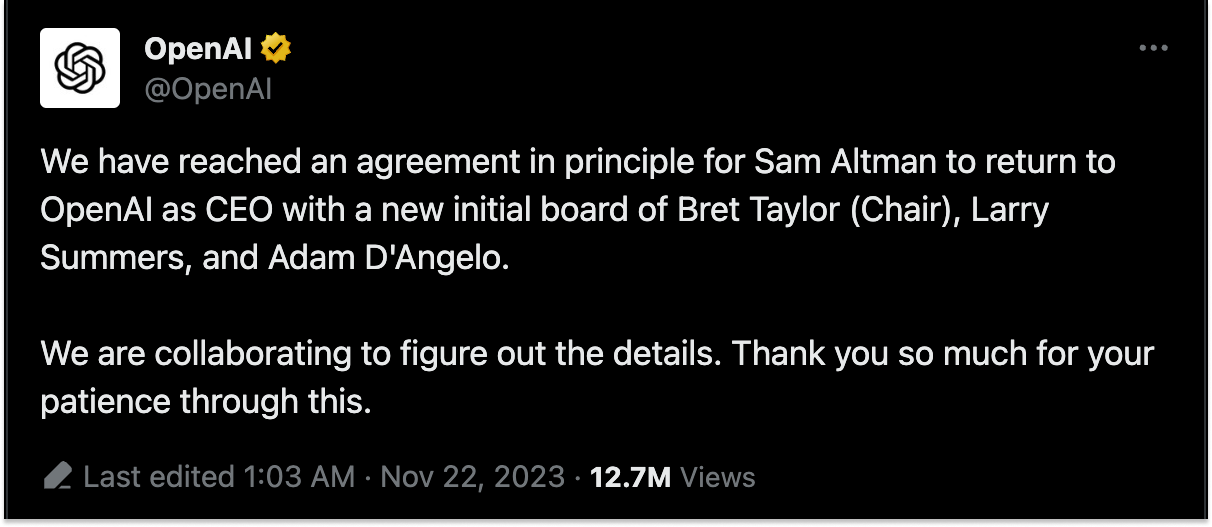Not Boring by Packy McCormick - OpenAI & Grand Strategy
Welcome to the 240 newly Not Boring people who have joined us since last week! If you haven’t subscribed, join 216,295 smart, curious folks by subscribing here: Instead of an ad, let me tell you about… Not Boring Capital Not Boring Capital invests in hard startups and tells their stories. For the past couple of years, I’ve been writing about why hard startups are the best place to invest and why I think tech companies are going to get much bigger, while investing in many of those companies at Not Boring Capital. SaaS drove the past decade’s returns, but it will not drive the next decade’s. Hard tech companies can scale without diluting early investors to smithereens, and the markets they tap at scale are massive. I think the outcomes will be bigger, and more impactful, as a result. We’re in a great position for this shift: we write non-lead checks in the best hard startups we can find and provide differentiated value by explaining what they do, like we’ve done this year with Atomic AI, Varda, and Array Labs. Techno-optimism is on the rise. The future is bright. We’ve been consistent in our conviction throughout the bear market, and it’s time to accelerate. If you’re an accredited investor or family office interested in learning more about investing in Not Boring Capital, let me know here and I’ll reach out: Hi friends 👋, Happy Wednesday! What a week. I don’t know if there’s a Newsletter God, but certainly if there is, that god was smiling on me. I wanted to write a piece on grand strategy in tech, and I was gifted the perfect case study. Whether you just want to sound a little more sophisticated when you explain what happened at OpenAI to your family at Thanksgiving dinner or plan to build a trillion-dollar company, I’ve got you covered. Let’s get to it. OpenAI & Grand StrategyThere’s this meme that goes something like this: “Men used to go to war, now they run tech companies.” The meme is meant to be sarcastic, to suggest that our modern pursuits are relatively meaningless. That’s not how I read it. I think it’s great. Count me among those who would rather our best people start companies to achieve goals no old-time general could have dreamed of than kill each other by the hundreds of thousands in pursuit of lesser ones. Oh, you brought 600,000 young men into Russia to what? Enforce the Continental System, weaken Britain’s economy, expand French influence in the East, and flex your military prestige? And you lost half a million of them? Bravo! Quel coup de maître! Do you know how many men Napoleon would have risked to control even a fraction of the wonders we have at our disposal today? With 770 nerds, OpenAI unlocked infinitely available intelligence. With fewer than 10,000, SpaceX built a rocket that may one day make humans multi-planetary. With about 30,000 lines of code, Satoshi introduced a viable alternative to government-issued currencies. The occasional board coup is a small price to pay compared to a bloody war. In On War, 19th century military theorist Carl von Clausewitz wrote that “War is merely the continuation of policy by other means.” The great strategist meant that war should always serve policy, rather than the other way around. War is one way to accomplish a goal, not the goal itself. Means, not ends. Technology, too, is just the continuation of policy by other means, but it’s a positive-sum and relatively peaceful continuation. Think of it this way: at the two extremes of the climate change solution spectrum, there’s “reduce the world’s population to under 5 billion people” and “build more nuclear, solar, and fusion.” One would lead to war, death, and misery, and the other to abundance. Same ends, very different means. As tech companies get much bigger, as they accomplish nation-state-level goals with more limited means, their leaders need to think like the great leaders of history, people like Augustus Caesar, Elizabeth I, and Abraham Lincoln. The most ambitious tech leaders need to be grand strategists. What is grand strategy? “The alignment of potentially unlimited aspirations with necessarily limited capabilities.” That’s how Yale Military and Naval History Professor John L. Gaddis defines it in On Grand Strategy, the 2018 book he wrote to condense the lessons from history’s great leaders and strategists into 312 pages. He adds, “Alignments are necessary across time, space, and scale.” The book talks a lot about war — The New York Times titled its review, When to Wage War, and How to Win — but when I read it a few weeks ago while writing Tech is Going to Get Much Bigger, I kept thinking about how much it applies to really ambitious tech companies. At the end of that piece, I wrote, “Take your ambition and multiply it by 100. Craft a Grand Strategy. We’ll talk about that next time.” Then I started writing this piece, thinking about what examples I could use to illustrate the themes from the book, things like…
…when a decade’s worth of examples fell into my lap over the course of five days.
In each case, this week’s headlines were the result of decades of patient, flexible, efforts across time, space, and scale. To the grand strategist, specific companies may just be means of acquiring the capabilities to pursue greater aspirations. It covers time, space, and scale. The ancient Greek poet Archilochus of Paros wrote, as Isaiah Berlin remembered it, “The fox knows many things, but the hedgehog knows one big thing.” The grand strategist, according to Gaddis, is both fox and hedgehog: “We’d need to combine, within a single mind (our own), the hedgehog’s sense of direction and the fox’s sensitivity to surroundings. While retaining the ability to function.” Grand strategists must, as Octavian and Lincoln did, “stick to their compass heading while avoiding swamps.” Pursue a grand ambition relentlessly, but remain flexible in your pursuit as you respond to changing circumstances. Each of the three examples I mentioned above deserves its own analysis. The fact that there are clearly grand strategists at work in all three cases – even if the grand strategy is only clear, even to them, with the benefit of hindsight – shows that to build businesses that challenge governments in scope and scale requires grand strategy. The world’s largest industries are up for grabs, and new, larger ones are open to creation. But just because they’re open doesn’t mean they’ll be easy. Cracking the really big industries is going to be a dogfight. Look at crypto. Or nuclear. Or AI. Or OpenAI. The higher you climb, the stronger the opposition will be, from governments, incumbents, and even your own board. Their tactics will be dirty. And it makes sense! In the context that tech is going to get much bigger as it goes after the big pools of money and power, it’s the rational response. Wars have been fought, over and over again throughout history, for much smaller prizes. One way to approach the situation would be to complain about how unfair it all is. But that won’t work. There is no referee. The other way would be to accept reality as it is and play the game on the field to win. This is the more effective route, and the more difficult one. It requires foresight and flexibility, theory and common sense, idealism and pragmatism, long-term goals and short-term actions, power and vulnerability, caution and audacity. If you take the red pill, you’re going to need to craft a grand strategy. There’s no playbook, unfortunately, just lessons from history that you can use as a starting point. As Gaddis writes:
Theory serves practice, which corrects theory. Be schooled in the theory and flexible in its practice. “Assuming stability is one of the ways ruins get made,” Gaddis warns. “Resilience accommodates the unexpected.” Resilience accommodates the unexpected sounds a lot like what went down at OpenAI over the past week. The best way to understand the OpenAI saga is through the lens of grand strategy, and the best way to understand how to apply grand strategy to tech companies is through the lens of the OpenAI saga. Sam’s Grand StrategyLast Thursday, Sam Altman was the CEO of an AI company with a weird non-profit board. On Friday, that board fired him as CEO without warning. Today, six days later, he is back as CEO of the same AI company, with a new board and with the tech equivalent of the Mandate of Heaven. Writing about the unpredictable chain of events that turned Octavian from 18-year-old kid into Augustus Caesar, first Emperor of Rome, Gaddis says, “There’s no way Octavian could have planned all of this. Instead he seized opportunities while retaining objectives. Octavian stuck to his compass heading while avoiding swamps.” The same could be written of the situation at OpenAI over the past five days. Altman didn’t plan this situation, but the outcome looks as if he did. For grand strategists, as Littlefinger told Varys: “Chaos isn’t a pit. Chaos is a ladder.”  Way back in August 2008, when Altman was 24-years-old and still just the CEO of a YC-backed location-based social network called Loopt, Y Combinator founder Paul Graham wrote in a blog post, “When we predict good outcomes for startups, the qualities that come up in the supporting arguments are toughness, adaptability, determination… Sam Altman has it. You could parachute him into an island full of cannibals and come back in 5 years and he'd be the king.” Eight months later, in April 2009, Graham wrote a blog post about the five most interesting founders of the last 30 years. Alongside Steve Jobs and Larry & Sergey, PG highlighted the then-24-year-old Altman: “On questions of strategy or ambition I ask ‘What would Sama do?’” That combination of strategy and ambition is essentially grand strategy. And before Altman had achieved any success, Graham singled him out for possessing it. The way to view the past weekend isn’t as Altman pulling a good outcome from a bad situation in days. It’s as the result of at least 15 years of building capabilities to match his aspirations, and being adaptable enough to use them when the time came. Aligning Aspirations and Capabilities The meta-principle from On Grand Strategy is the importance of aligning your aspirations and your capabilities. If there’s just one thing to take away, it’s that. So this is the one we’ll spend the most time on. “Napoleon lost his empire by confusing aspirations with capabilities;” Gaddis writes. “Lincoln saved his country by not doing so.” Time, space, and scale. Napoleon lost his empire by failing to align his capabilities with the scale of the challenge in Russia. Lincoln saved his by patiently waiting for the right time to issue the Emancipation Proclamation. Octavian, who would become Caesar Augustus, grew his capabilities over time to match his aspirations as well. After the death of Julius Caesar in 44 BC, his heir Octavian waited 17 years to claim the leadership of the Roman Republic that Caesar passed to him. In that time, he made and broke alliances, won and lost battles, built up his strengths and learned to manage his weaknesses, patiently waited for his enemies to eliminate themselves, and came to represent what Rome stood for in the eyes of the Roman people. He built up his capabilities to match his ambitions. By biding his time – seeing time as an ally – and building up his capabilities to match his ambitions, he gained more power than even Julius Caesar had, maintaining the facade of the Roman Republic while in reality leading the new Roman Empire. And he avoided his predecessor’s downfall, ruling over the Empire for the next 13 years until dying of natural causes just short of his 77th birthday. How much time do men spend thinking about the Roman Empire? Maybe not enough! In Choose Good Quests, Markie Wagner and Trae Stephens compare founders to players with “specific resources, skills, and powers.” For a college-aged Mark Zuckerberg, building a social network for college students was a good quest because it leveraged his specific resources, skills, and powers. For Palmer Luckey, who sold Oculus to an older Zuck for $2 billion, a good quest was one with higher aspirations to match his greater capabilities: modernizing defense. Both Zuck and Palmer are accomplishing things today that they would have failed at in their teens. If you have Level 1 capabilities, you need to level up before going after Level 10 aspirations. The same was true for Octavian, and for Sam Altman. In all of the craziness of the past week, the most striking thing to me was the support Altman received: from other founders, investors, the tech community, and most importantly, OpenAI’s employees. When the news initially broke on Friday afternoon, given the wording in the board’s blog post, the assumption was that Altman had done something Very Bad. Quickly, though, prominent founders and investors like Airbnb’s Brian Chesky and SV Angel’s Ron Conway, came to his defense. Soon after, X was filled with tweets from founders who Sam had quietly gone above and beyond to help over more than a decade. That shift in the narrative gave him a position of strength from which to fight back, and it wouldn’t have been possible if he hadn’t spent the past 18 years in Silicon Valley building up his capabilities to match his aspirations. When the news broke on Saturday morning that Altman and OpenAI co-founder and President Greg Brockman were already talking to investors about starting something new, those rumors carried a credibility that they wouldn’t have if Altman were a fresh founder. By Saturday evening, when rumors that Altman might come back as CEO started swirling, it seemed almost a fait accompli. That night, Sam tweeted “i love the openai team so much” and the team responded with a show of force in the form of quote-tweet heart emojis, signifying that if Sam left, they would too in the most 2023 way possible. Negotiations dragged on all through Sunday. It looked like Altman and Brockman would return and the board would resign. And then on Monday morning, we woke up to a bombshell: that Twitch CEO Emmett Shear would become OpenAI CEO, while Sam and Greg would lead a new AI research team within Microsoft and bring OpenAI employees with them. Microsoft Satya Nadella, a grand strategist in his own right, and Sam Altman were the winners, and OpenAI’s board were the losers. But the saga didn’t end there. On Monday morning, at the buttcrack of dawn west coast time, more than 500+ of 770 OpenAI employees (over 95% of employees ultimately) signed a letter threatening to quit and join Sam and Greg at the new Microsoft AI thing unless all current board members resign and a new board reinstates Sam and Greg. Over the past couple of days, it became clear that the board’s reasons for firing Sam were shaky at best, and that whatever the facts, Altman had the support of the people. As of this morning, Sam is back in as CEO, with a new board. Altman played the situation perfectly. He drew on a career’s worth of built-up capabilities and relationships, and maintained flexibility on the specifics in pursuit of the long-term goal by showing a willingness to work towards AGI at a new startup, within Microsoft, or at OpenAI. It was downright Octavian. When Octavian reached the height of his power after the downfall of his rival Antony, writes Gaddis:
The board, meanwhile, failed miserably in its coup by ignoring the lessons of grand strategy. As Gaddis warns, “The principle, for both Augustine and Machiavelli, reflects common sense: if you have to use force, don’t destroy what you’re trying to preserve.” They almost destroyed the company, and ended up destroying their oversight over it. Why? Their capabilities didn’t match their aspirations. In fact, they seemed to have wildly misjudged their capabilities, believing that the company’s wonky governance structure gave them the leeway to do as they wished, but not realizing that real power doesn’t come from pieces of paper, but from the will of the people. They didn’t realize that OpenAI is nothing without its people. And they didn’t maintain ecological sensitivity. They didn’t understand the tech community well enough to understand that most people would support Altman, didn’t understand the investors well enough to know how much pressure they would apply, and didn’t know the company well enough to realize that its people would walk. They didn’t pick up on the subtle vibe shift from safetyism to acceleration, and failed to anticipate how little support they would receive. They came at the king, and missed, and made him the Emperor. Becoming a Grand StrategistHere’s the thing: as crazy as this past week was, things are going to keep getting crazier. I keep banging this drum, but I can’t bang it loudly enough: things will keep getting crazier. The things that tech companies build in the coming years will blow even my optimistic mind and give them power on a scale no company has had. They’ll rival nation-states. They already rival nation-states – Apple’s $383 billion in 2023 revenue would rank it 41st in the world in national GDP, sandwiched between Hong Kong and South Africa, and while revenue and GDP aren’t perfect comps, those are serious numbers – but they’ll rival more powerful ones. Battles like one we all just witnessed at OpenAI, like the decades-long attack on nuclear, like the government’s anti-crypto Operation Chokepoint 2.0, will become more common, not less. And that’s fair. The stakes are that high. If you’re reading this and you have ambitions to make the world a different place, know that coming in, but don’t let it deter you. Know that it’s what you’re up against, and start crafting your own grand strategy. Acquire capabilities to match your ambitions. Maintain ecological sensitivity. Build alliances. Embrace chaos. Know theory while accepting that it won’t survive contact with practice. Remain flexible in tactics and steadfast in ambition. Certainly, read On Grand Strategy. I captured a fraction of the lessons from the book. Live in the stories that Gaddis tells, put yourself in the shoes of history’s greats. Coming up on the holiday season, when we all get a little time to relax and reflect, think about the final theme from the book: Know What It’s All About. What are you working towards, and why? There’s never been a better time for a small group of passionate people to change the course of history, for the better, bloodlessly. Go craft your grand strategy and get to work. Thanks to Dan for editing! That’s all for today. Have a Happy Thanksgiving, and we’ll be back in your inbox with the Weekly Dose on Friday! Thanks for reading, Packy |
Older messages
Weekly Dose of Optimism #69
Friday, November 17, 2023
CRISPR, Batkid, GraphCast, Nuclear Pledge, Starship, AoM5
Blockchains As Platforms
Friday, November 17, 2023
Benefits, Drawbacks, and Trade-Offs
Weekly Dose of Optimism #68
Friday, November 10, 2023
devday, DACs, Zepbound, Turmeric, Humane, AoM e4
Tech is Going to Get Much Bigger
Wednesday, November 8, 2023
What happens when energy, intelligence, and labor get cheap?
Weekly Dose of Optimism
Friday, November 3, 2023
Mini Lasers, Giant Reactors, DNA Origami, AoM e3, AI EO, Palmer
You Might Also Like
🔮 $320B investments by Meta, Amazon, & Google!
Friday, February 14, 2025
🧠 AI is exploding already!
✍🏼 Why founders are using Playbookz
Friday, February 14, 2025
Busy founders are using Playbookz build ultra profitable personal brands
Is AI going to help or hurt your SEO?
Friday, February 14, 2025
Everyone is talking about how AI is changing SEO, but what you should be asking is how you can change your SEO game with AI. Join me and my team on Tuesday, February 18, for a live webinar where we
Our marketing playbook revealed
Friday, February 14, 2025
Today's Guide to the Marketing Jungle from Social Media Examiner... Presented by social-media-marketing-world-logo It's National Cribbage Day, Reader... Don't get skunked! In today's
Connect one-on-one with programmatic marketing leaders
Friday, February 14, 2025
Enhanced networking at Digiday events
Outsmart Your SaaS Competitors with These SEO Strategies 🚀
Friday, February 14, 2025
SEO Tip #76
Temu and Shein's Dominance Is Over [Roundup]
Friday, February 14, 2025
Hey Reader, Is the removal of the de minimis threshold a win for e-commerce sellers? With Chinese marketplaces like Shein and Temu taking advantage of this threshold, does the removal mean consumers
"Agencies are dying."
Friday, February 14, 2025
What this means for your agency and how to navigate the shift ͏ ͏ ͏ ͏ ͏ ͏ ͏ ͏ ͏ ͏ ͏ ͏ ͏ ͏ ͏ ͏ ͏ ͏ ͏ ͏ ͏ ͏ ͏ ͏ ͏ ͏ ͏ ͏ ͏ ͏ ͏ ͏ ͏ ͏ ͏ ͏ ͏ ͏ ͏ ͏ ͏ ͏ ͏ ͏ ͏ ͏
Is GEO replacing SEO?
Friday, February 14, 2025
Generative Engine Optimization (GEO) is here, and Search Engine Optimization (SEO) is under threat. But what is GEO? What does it involve? And what is in store for businesses that rely on SEO to drive
🌁#87: Why DeepResearch Should Be Your New Hire
Friday, February 14, 2025
– this new agent from OpenAI is mind blowing and – I can't believe I say that – worth $200/month
